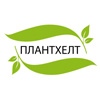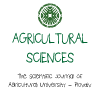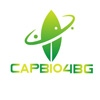Postharvest physiology of seeds and vegetables
|
Course title: |
Postharvest physiology of seeds and vegetables |
|
|
Course code: |
AFPSV |
|
|
ECTS: |
3 |
|
|
In-class hours |
Lectures: |
15 |
|
Laboratory work/Tutorials: |
15 |
|
|
Self-preparation hours |
Practical training: |
- |
|
Other: |
45 |
|
|
Total hours: |
75 |
|
|
Language: |
English |
|
|
Study cycle: |
Bachelor, Master, PhD |
|
|
Semester: |
Winter & Summer |
|
|
Faculty: |
Faculty of Agronomy |
|
|
Name of the lecturer(s): |
Assoc. Prof. Lyubka Koleva, PhD Chief Assist. Prof. M.Kaymakanova, PhD |
|
|
Mode of delivery: |
Face-to-face, distance learning, a combination of both |
|
|
Prerequisites: |
- |
|
|
Learning outcomes of the course unit: |
The aim of the course is to reveal the nature and dynamics of physiological processes in the postharvest period of fruits, vegetables, and other consumable parts of plants. Topics studied include: climatic requirements, fruit drop, nutrition, ripening, fruit set. The production of food crops also hinges on the study of plant physiology covering such topics as optimal harvesting times and postharvest storage of plant products for human consumption. In general, crop production is classified into two groups: Production with low water content (below 15%), which includes seeds and dried fruits. The postharvest period is characterized by different types of dormancy. The postgraduate students will learn more about the physiological-biochemical processes in seeds, the concepts of vitality, longevity and dormancy, and the influence of phytohormones and environmental factors. Fresh plant products (fruits and vegetables) with high water content (up to 98%). In this type of plant production there occur intensive plant physiological processes (respiration, photosynthesis, water exchange) and biochemical reactions. Students will become familiar with the storage conditions of fruit and vegetables and will receive information about potential risk factors and the opportunities to regulate the production quality. |
|
|
Course contents: |
LECTURE: 1. Characteristics of seeds. Seed structure. Chemical composition of seeds. Accumulation and transformation of reserve substances into – proteins, carbohydrates, lipids and other. 2. Phytohormonal complex in the seeds (role of the phytohormones in the developing seed and postharvest period. Gibberellins. Auxins. Cytocinins. Abscisic Acid. 3. Imbibitions and germination of seeds. Kinetics of water uptake by seeds. Metabolism of germinated seeds. Primary metabolism. 4. The rate of respiration during storage. Degradation of spare fat, protein and starch. Environmental Control on the respiration (humidity, temperature, air and gas from the seed coat, phosphorus compounds.) 5. Dormancy. Postharvest ripening study of seeds. Physiology and biochemistry of dormancy. Different types of seed dormancy (exogenous, endogenous and combined). Possibilities for the regulation of dormancy and improving the quality of seed. 6. Viability of seeds. Assessment of viability. Physiology and biochemistry of viability of seeds. Longevity- biological and technological. 7. Physiological and biochemical processes in seeds under storage. Prolonged storage. State of maturity. Conditions for transport of seed. Environmental Control on the duration of storage and aging of seeds. 8. Postharvest plant physiology of fresh produce. Water exchange of different types of fresh vegetable production. Mechanisms of movement of water in different plant organs, speed, barriers to overcome. 9. Specifications surface evaporation in fruit and vegetables. Possibilities for the regulation of water exchange in the postharvest period and storage production quality. 10. Gas exchange in the postharvest period in fresh produce. Gas exchange in respiration. Influence of internal factors: concentration and type of respiratory substrate, moisture, stage of development of productive organs, structural features. 11. Environmental Control on gas exchange (humidity, temperature, air and gas, classify, injuries, biotic factors). Possibilities to regulate gas exchange. 12. Nitrogen metabolism in the postharvest period in vegetables and fruits. Processes and hydrolytic enzyme activity. Synthesis of pigments. 13. Physiological stress reactions in the postharvest period in relation to production quality. Abiotic stressors. Water and heat stress (low and high temperature); stress of metabolic products in postharvest period (ethylene, phenols, ABA, melanin pigments). 14. Biotic stress (phytopathogens and pests) and change in quality of crop production). 15. Maturation and aging of fruits and vegetables. Physiological-biochemical processes of maturation and postharvest period. Phitohormonal complex. Changes in pigments, texture, taste. 16. Regulation of physiological process in postharvest period – a prerequisite for prolonged storage and production quality.
LABORATORY PRACTICAL WORK: 1. Water exchange in different types of fresh vegetable production. Effect of roof fabric and anatomo-morfological characteristics of consumables body. 2. Establishing water loss depending on temperature and relative humidity of the environment. 3. Intensity of respiration depending on water content and characteristics of the productive organ (seeds, fruits tubers etc) of plants. 4. Changes in pigment content during the postharvest period. 5. Changes in phenols and melanin content during the postharvest period. 6. Opportunities for regulatory dormancy of seeds, bulbs, tubers etc. 7. Regulation of developments in postharvest period. 8. Changes in enzyme activity during storage of fruits and vegetables. 9. Changes in the quality of vegetation production in biotic stress. 10. Effect of low and high temperatures on the quality of fruits and vegetables. |
|
|
Recommended or required reading: |
1. Benech-Arnold R., Sanchez R. Seed Physiology, Applications to Agriculture, 2004. 2. Bewley J.D. M.Black. Physiology and Biochemistry of seeds. Development, Germination and Growth. New York, 1983. 3. Bewley J.D. M.Black. Physiology and Biochemistry of seeds. Viability, Dormancy, and Environmental control, 1982. 4. Bewley J.D. M.Black. Seeds Physiology of Development and Germination. Plenum press, NY, pp 45, 1994. 5. Kerin V. Postharvest plant physiology. 2006, Agric. Univ. Of Plovdiv. (Bg). 6. Rurg S., 2004. Post harvest Physiology and Hypobaric Storage of Fresh Produce.CABI Publishing, USA. 7. Wills,R., W. McGlasson, D. Graham, D. Joyce, Postharvest: An introduction to the physiology and handling of fruit, vegetables and ornamentals, 5th edition. Australia. 8. Bartz J.A., Bretch J.K., 2003. Postharvest physiology and pathology of vegetables. Sec. Edition. NY, USA. |
|
|
Planned learning activities and teaching methods: |
The course includes the following mandatory components: lectures, seminars as well as student self-preparation. The lectures and laboratory practical work are supported by extensive literature and material basis. The lectures are delivered by means of PowerPoint presentations |
|
|
Assessment methods and criteria: |
The course ends with a written examination. The latter includes a pre-defined set of questions, which is drawn from the course material. The grading will conform to the 6-grade system. The results will be published no later than 2 weeks after the exam. |
|
 - Събития по случай 80-я юбилей на АУ
- Събития по случай 80-я юбилей на АУ











